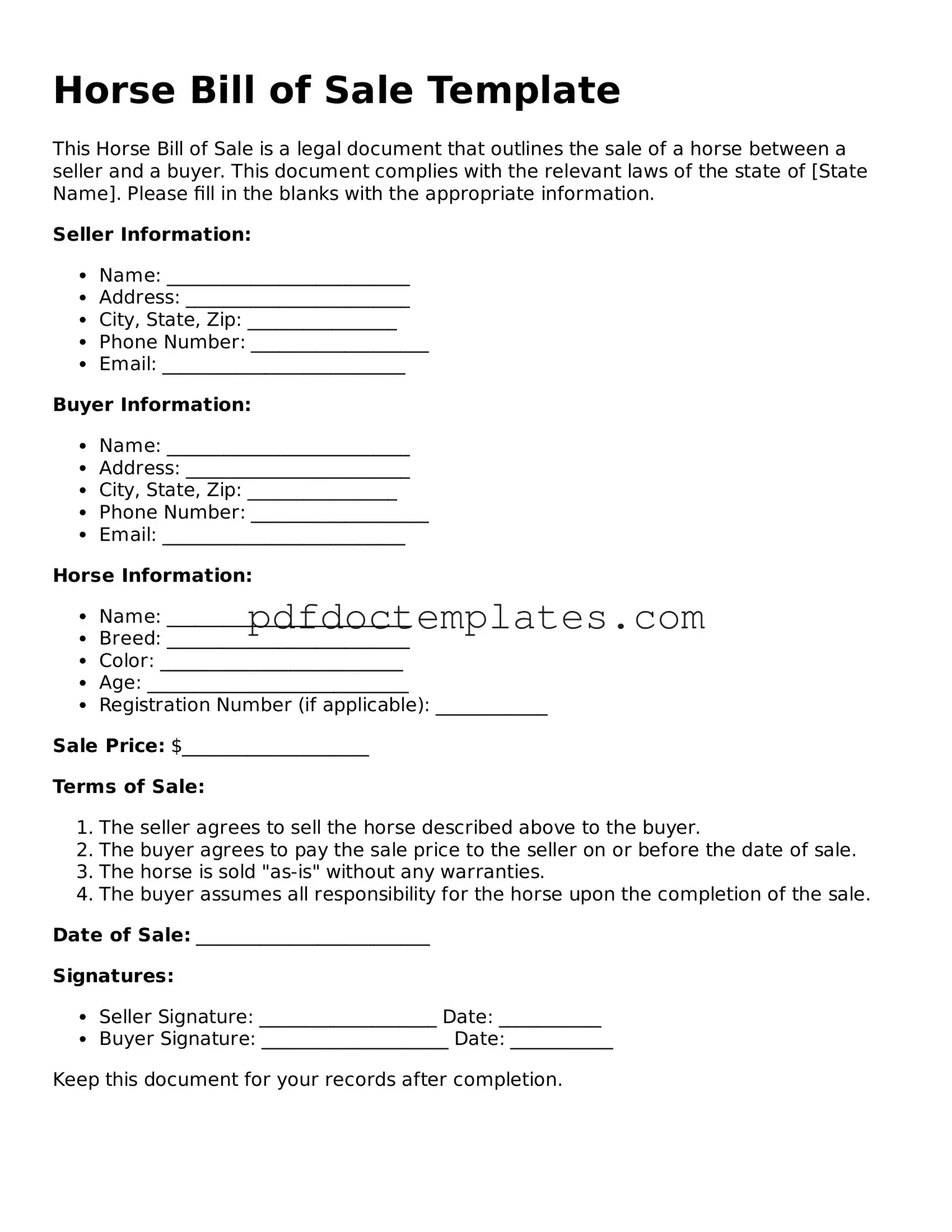Horse Bill of Sale Template
This Horse Bill of Sale is a legal document that outlines the sale of a horse between a seller and a buyer. This document complies with the relevant laws of the state of [State Name]. Please fill in the blanks with the appropriate information.
Seller Information:
- Name: __________________________
- Address: ________________________
- City, State, Zip: ________________
- Phone Number: ___________________
- Email: __________________________
Buyer Information:
- Name: __________________________
- Address: ________________________
- City, State, Zip: ________________
- Phone Number: ___________________
- Email: __________________________
Horse Information:
- Name: __________________________
- Breed: __________________________
- Color: __________________________
- Age: ____________________________
- Registration Number (if applicable): ____________
Sale Price: $____________________
Terms of Sale:
- The seller agrees to sell the horse described above to the buyer.
- The buyer agrees to pay the sale price to the seller on or before the date of sale.
- The horse is sold "as-is" without any warranties.
- The buyer assumes all responsibility for the horse upon the completion of the sale.
Date of Sale: _________________________
Signatures:
- Seller Signature: ___________________ Date: ___________
- Buyer Signature: ____________________ Date: ___________
Keep this document for your records after completion.
